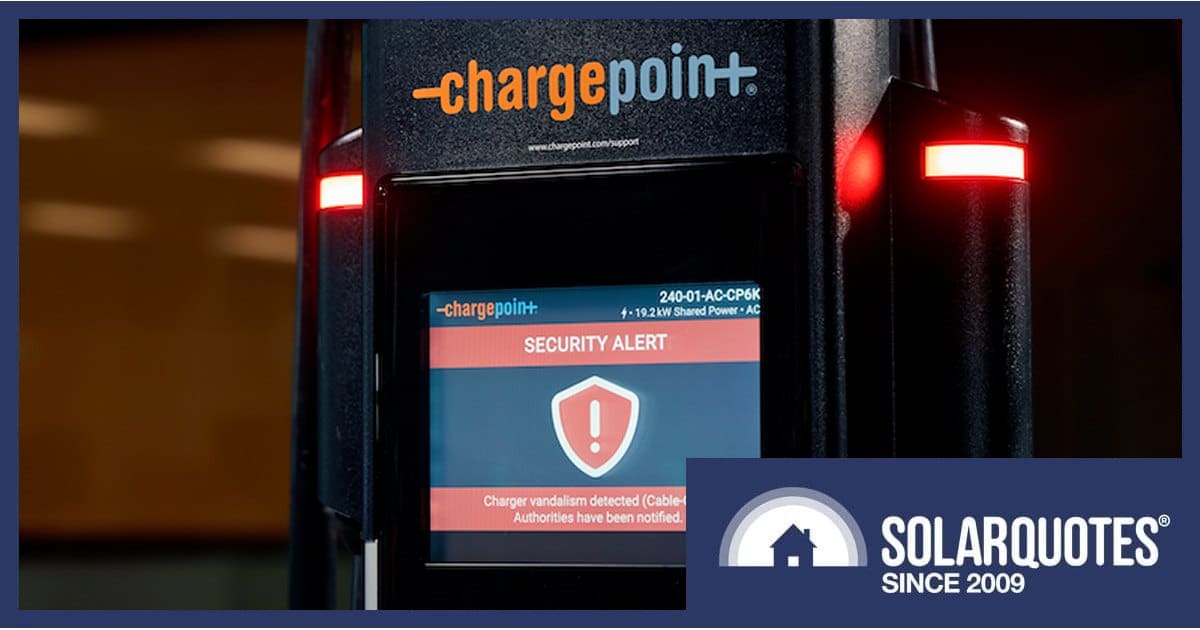While not a significant problem in Australia yet (and hopefully never will be), EV charging cable theft has been on the rise in the USA and UK.
EV charging cables contain copper, which was worth over USD $4 a pound last week – or around AUD $12 a kilogram at current exchange rates. A figure often bandied about as to how much copper is in a Level 2 charging cable is 5 pounds in a 22 foot cable; or approximately 2.3 kilograms in 7 metres. That’s about AUD $27 worth of copper.
But it’s not just a matter of peeling back the outer coating to get to the copper. Within that coating is a bundle of wires that are also encased in sturdy insulation. To strip out the copper wire is hard work, so scrap prices for unstripped cables are pretty low.
While a single typical Level 2 cable may not have much scrap value to you or I, it might do to someone hanging for a fix. And theft through cutting has been a growing problem at US and UK charging sites; particularly at DC fast charging stations. The bigger cables have more copper, and instead of pinching one, thieves will often take them all from a site and wind up with quite a haul.
ChargePoint Gets Tough On Theft
Last week, US networked charging solutions provider ChargePoint announced two new solutions to help combat vandalism and theft.
The first is a cut-resistant cable that remains flexible enough for drivers to use comfortably. The company says it will make these cables available for all of its commercial and fleet charging stations and will license the tech to other selected charging station manufacturers. It expects licensing will be available by the middle of this year.
The other innovation is an alarm system called ChargePoint Protect that utilises the existing speakers, screens and lighting system on the company’s chargers. It can detect tampering in real time and automatically trigger the alarm system while sending an SMS or email notification to the station owners. The firm expects ChargePoint Protect to be available on selected charging station models beginning this month. It will be provided at no additional cost to existing customers through a remote software system upgrade.
Home EV Charging Cable Security
But what about for the EV owner charging at home and/or using BYO-cable level 2 stations elsewhere? It’s not just the copper that can interest desperate thieves, but the full cables – which may be resold. A good quality 5- metre 7kW cable costs around $190 new. It’s the type of purchase you only want to make once.
There are some basic security features built into most EVs to help prevent theft. For example, when our Atto 3 is charging, the cable cannot be easily removed from the vehicle’s charging port. Even after charging, it won’t be released until the car is unlocked again. This is enough to discourage some opportunistic thieves.
If you’re installing an EV charger at home, a tethered cable may be worth considering if you have another for your travels. A tethered cable is one that’s permanently attached to the charger instead of a plug and socket arrangement. But the problem here is if a thief decides to cut it, which will leave an even more expensive mess. But “grab and go” opportunists will be discouraged.
If you have an untethered unit, consider installing it just inside your garage instead of outside. If it is outside, disconnect the cable from the charger after use and stash it somewhere. Leaving it attached in full view may be just too tempting for a snatch and run.
Some EV models have a bracket beside the port that allows for a padlock to be attached to the cable. And some EV chargers have electronic locking mechanisms. For example, the Fronius Wattpilot has several different locking modes. The standard mode is where the cable remains locked at the Wattpilot until completion of charging and the cable has been disconnected from the vehicle. The auto-unlock mode only locks it when the vehicle is charging and the “always locked” mode is, well, self-explanatory. The different modes can be easily set on the Wattpilot app.
One tip I’ve seen that *shouldn’t* be observed is parking a vehicle on the charging cable, which can damage it.


 RSS - Posts
RSS - Posts



Speak Your Mind